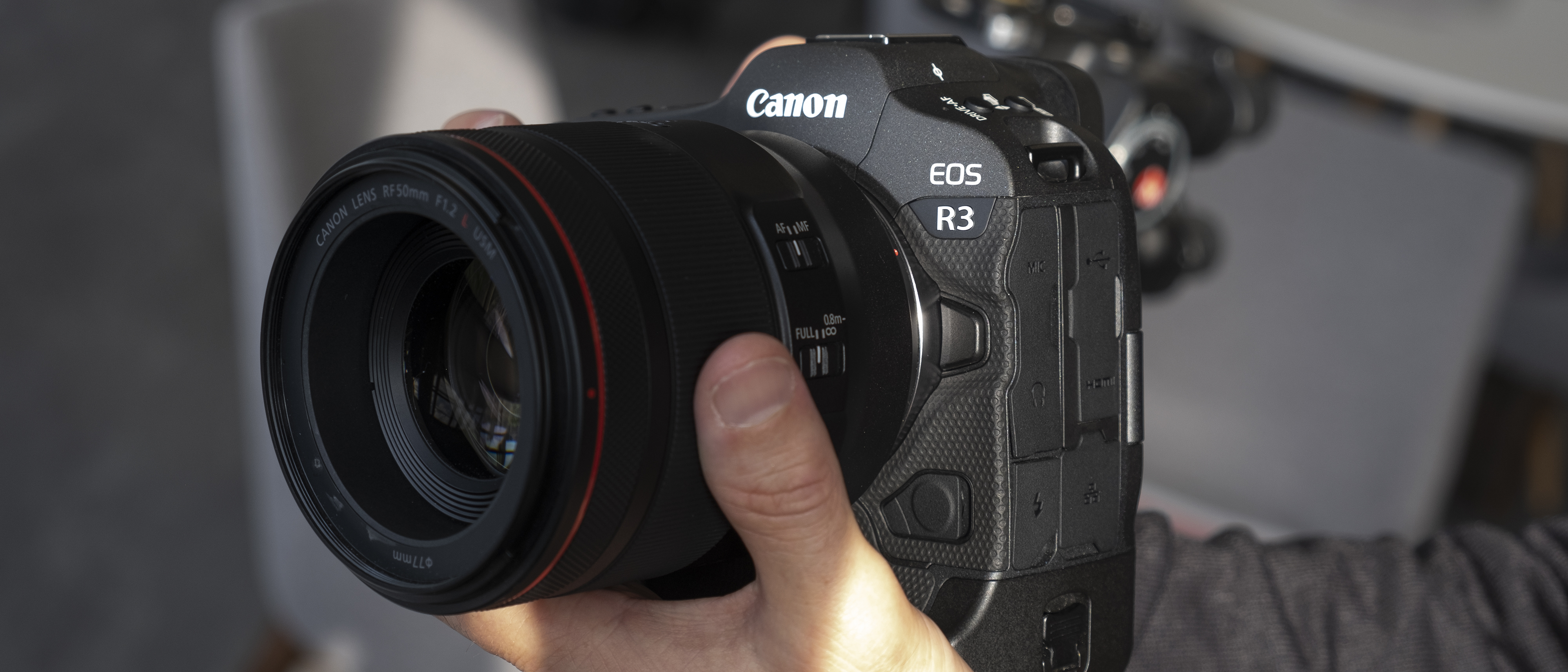TechRadar Verdict
A powerful blend of the old and new, the EOS R3 is one of the best sports and wildlife cameras ever made. Inside its old-school body is cutting-edge tech including a new stacked sensor, hugely impressive autofocus skills and 6K video. The EOS R3's lower-resolution sensor means it has more limited appeal than the Sony A1 and Nikon Z9, and the A1 does trump it in some areas like the EVF. But no other camera combines traditional DSLR charms with next-gen mirrorless tech like the EOS R3.
Pros
- +
New sensor unlocks serious speed
- +
Familiar design for pros
- +
Powerful AF features and controls
- +
Impressive video performance
Cons
- -
Large for a mirrorless camera
- -
No EVF improvement from EOS R5
- -
Too low-res for some snappers
Why you can trust TechRadar
Two-minute review
If you want a glimpse of the future of Canon's mirrorless cameras, take a look at the Canon EOS R3 – it might look like a DSLR from a decade ago, but inside it's one of the most advanced sports and wildlife cameras ever built.
Canon says the EOS R3 sits in between the Canon EOS R5 (its smaller mirrorless all-rounder) and the Canon 1D X Mark III (its chunky flagship DSLR). In practice, it's a combination of the two, and the mirrorless successor to the latter.
But Canon hasn't just repackaged its existing tech with the EOS R3. It's the flag-bearer for a host of new technologies, most notably a new 24.1MP backside-illuminated stacked CMOS sensor.
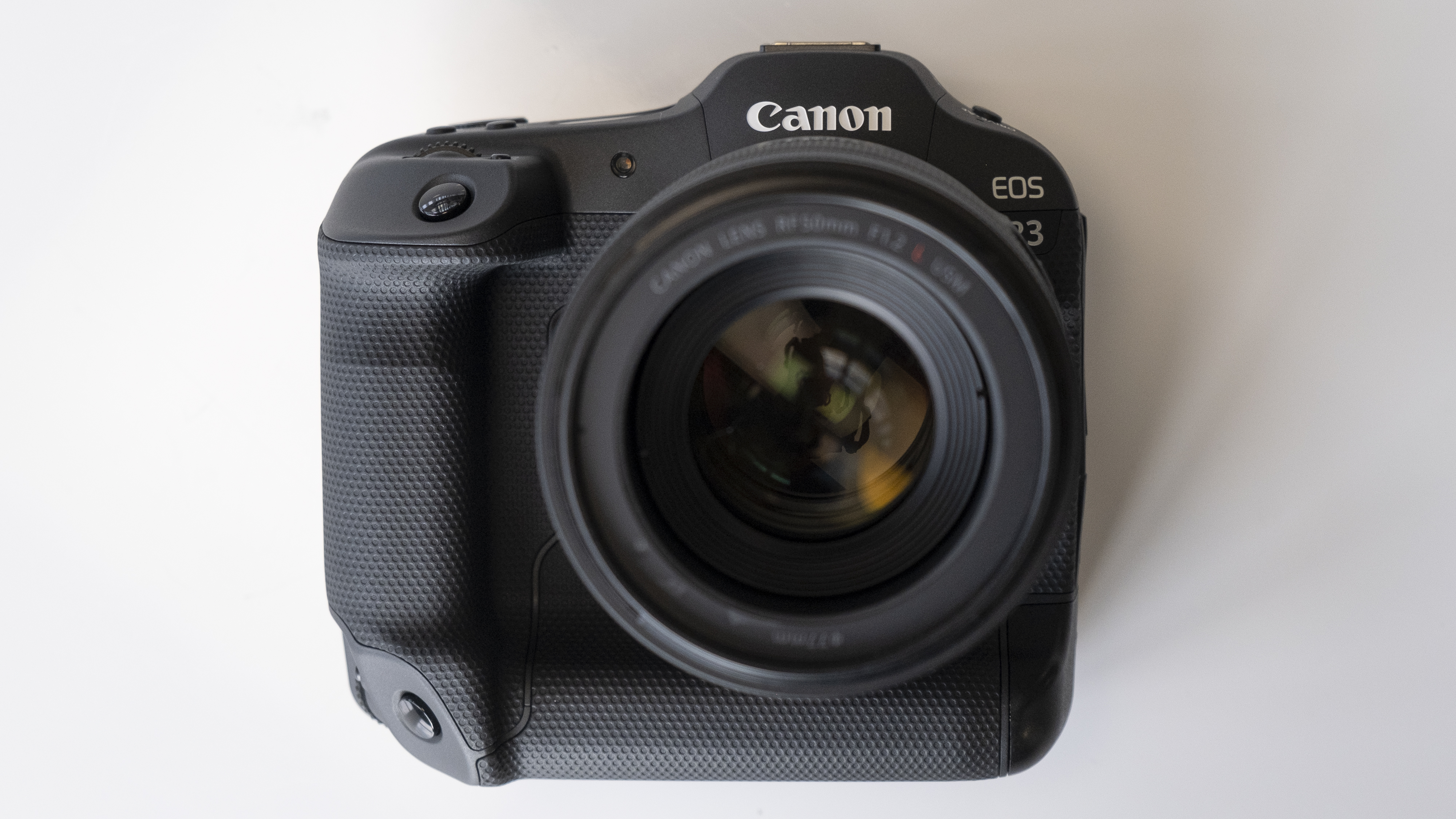
This sensor's stacked design apes that of Sony cameras like the Sony A1, giving the R3 a purring photographic engine that's capable of producing 30fps raw burst shooting and minimal rolling shutter in video.
Unusually for a pro sports camera, the EOS R3 also packs video treats like the ability to shoot 6K raw video internally, and an articulating touchscreen. There's even a modern incarnation of the 'Eye Control AF' system we saw back in the 1990s on Canon's SLRs, which lets you choose focus points just by looking at them in the viewfinder.
But does this rare combination of talents add up to a great camera, or a slightly confused one? There's no doubt that for, pro photographers, it's the former – it's unquestionably one of the world's best cameras for photography, and obviously one of the best Canon cameras you can buy right now.
If you're a paid snapper, just knowing that the EOS R3 is out there is going to be bad for your bank balance. After all, it's hard to justify shooting anything else when a camera that makes missing a shot – either because of autofocus, its continuous rate of shooting, or its low-light capabilities – extremely difficult.
Sign up for breaking news, reviews, opinion, top tech deals, and more.
The Canon EOS R3's price is certainly less appealing. This is latest-generation tech and Canon knows it, which is why you’ll be parting with the thick end of $6,000 / £6,000 / AU$9,000 if you decide to get one. That number goes up sharply once you're committed to its high-end RF-mount lenses.
And yet. Pick one up. Turn it over in your hands. This is the current pinnacle of mirrorless technology, at least for Canon shooters. And while the EOS R3 is undoubtedly overkill for most amateurs, and hardly a discreet camera for the street, it is – like the EOS 1D X Mark III before it – the new default choice for pros who can't or won't compromise, and are prepared to put their kit on the line to get the shot they need.
Canon EOS R3 price and release date
- The Canon EOS R3 costs $5,999 / £5,879 / AU$8,599
- That's pricier than the EOS R5, but less than the EOS 1D X Mark III
- It was due to ship in November, but there are currently stock shortages
The Canon EOS R3 has a body-only price of $5,999 / £5,879 / AU$8,599. As expected, that's a pro-level price tag that will be beyond most amateur snappers, although it is lower than the Sony A1's launch price ($6,500 / £6,499 / AU$10,499), and that of the Canon EOS 1D X Mark III, which cost ($6,499 / £6,499 / AU$9,999) when it landed in early 2020.
Been saving up for one? Unfortunately, the EOS R3 is hard to come by right now. In September, Canon released a statement saying that it had "received more orders than expected" and that "it will take some time before delivery". This means that all retailers currently only have the EOS R3 listed as available for pre-order or on backorder, but we'll update this page when this changes.
Design
- A smaller, lighter version of the Canon EOS 1D X Mark III
- Super-crisp, fully articulating 4.1 million-dot touchscreen
- Same electronic viewfinder (EVF) as the Canon EOS R5
Canon won't ever describe it as such, but the Canon EOS R3 is clearly the mirrorless equivalent of its Canon EOS 1D X Mark III sports DSLR. This means it's larger than the Sony A1 (which doesn't have a built-in grip), but smaller than its DSLR cousins.
In the hand, the EOS R3 is considerably lighter than the 1D X Mark III, weighing 822g (or just over 1kg with a card and battery). That's a huge weight saving of over 400g, which will please the spines of sports snappers. The size difference is less noticeable, with the EOS R3 being about 2.5cm shorter, nearly a centimeter narrower and about 4mm deeper than the 1D X Mark III, but it doesn’t lose any of its grab-ability compared to Canon’s other pro-grade cameras.
The grip – now finished in a fetching carbon-fibre style rubber – is deep and easy to keep hold of. It’s spectacularly light for a full-height pro camera and the handling is superb. Canon has built up substantial experience when it comes to making cameras that are as quick to use as they are to shoot, and it’s all brought to bear here.
The buttons are large and have relatively deep travels, which means you know when you’ve hit one, as well as being usable with gloves. The menu system is big, bold and responsive, and anyone coming from any of Canon’s recent models will take no time getting up to speed.
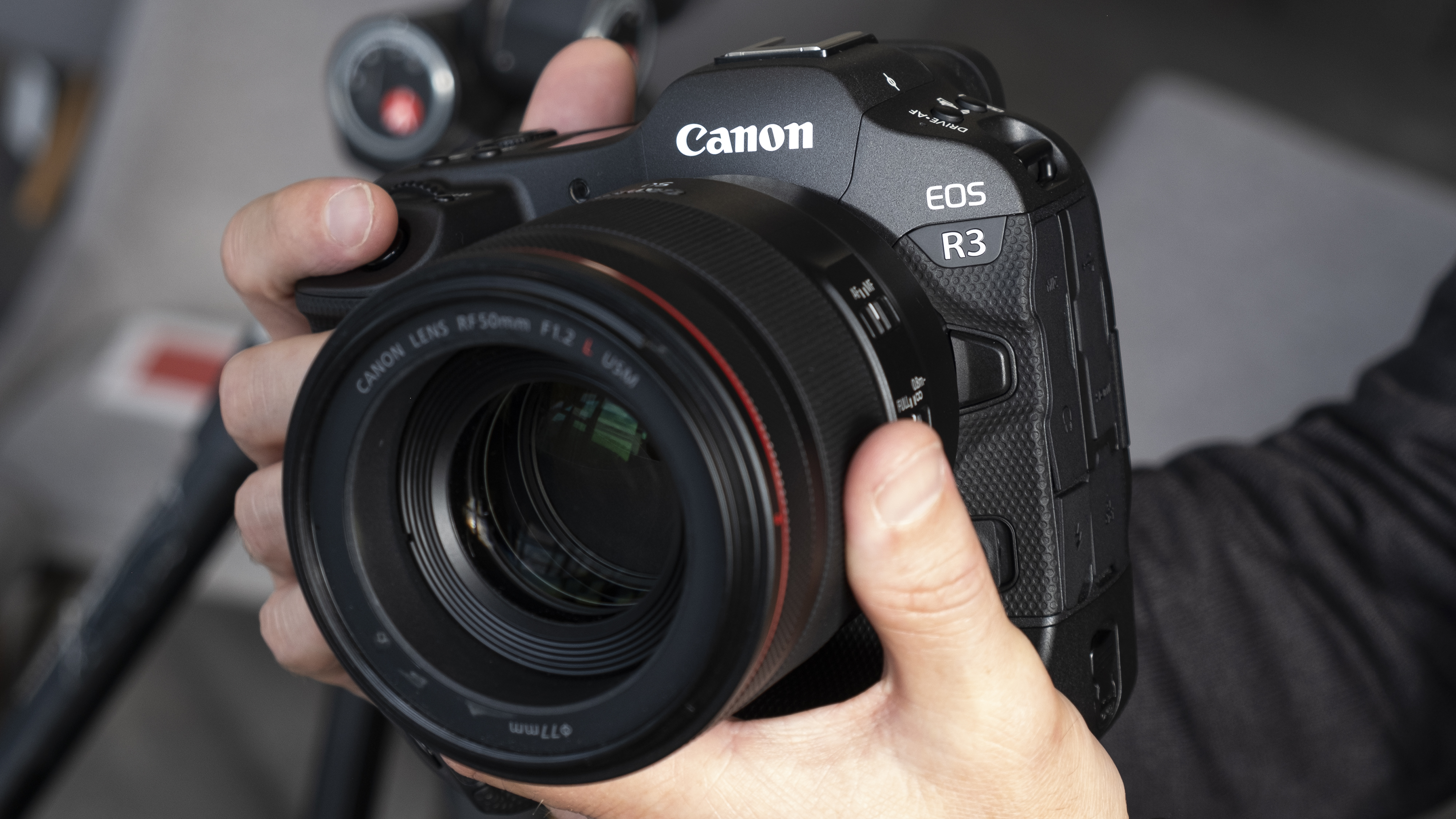
What really marks out the EOS R3 as a professional sports camera, compared to smaller models like the Canon EOS R5, is its build quality and built-in battery grip. It has a magnesium alloy body that makes it the toughest mirrorless camera Canon has made so far.
The EOS R3 has the same level of weather-proofing as the 1D X Mark III, but it isn't built to withstand the same extremes of temperature as Canon's bomb-proof DSLR; this is predominantly a sports camera, after all, as shown by that built-in portrait grip. It also uses the same LP-E19 battery as the EOS-1D X Mark III, which has a capacity about a third higher than that of the Canon EOS R5's LP-E6NH battery.
Canon has clearly attempted to make the EOS R3 as comfortably familiar as possible for those coming from its pro DSLRs. There's no room for the 1D X Mark III's mini display on the back, but the majority of its rear buttons are in the same place as on that camera – and it also has the Smart Controller that debuted on that DSLR in 2020.
This touch-sensitive AF-On button is a bit like an upside-down computer mouse, letting you quickly move your autofocus point around the frame. While it split opinion among photographers, Canon clearly had enough good feedback from its pro snappers to keep it on the EOS R3 – and there's an extra Smart Controller button for when you're shooting in portrait, too. Those who aren't a fan of this modified AF-On button can also use the traditional, knurled AF joysticks.
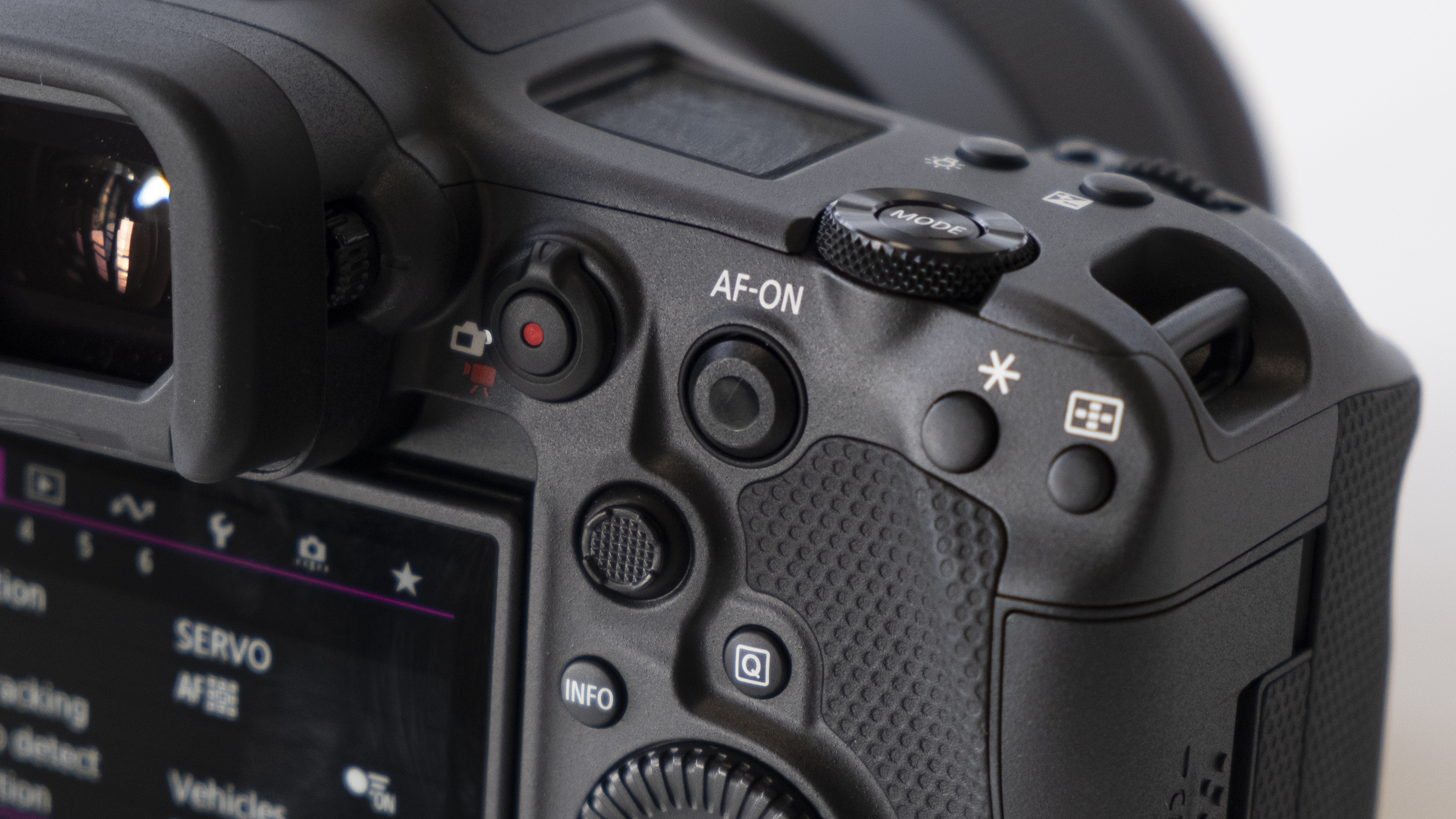
Elsewhere, 'festooned' is a good way of describing the way the R3 is decorated with buttons. Customizable Fn buttons on the front give you plenty of ways to set the camera up just as you want it, while the back – and top plate – give you near instant access to drive mode, autofocus settings, metering mode and plenty more. The thumbwheel on the back is a good way of cracking through menu options, and for those who prefer pecking their way through menus, the screen on the back is, natch, a touchscreen.
The left-hand side of the camera is all ports. The usual suspects are in attendance; HDMI, USB-C (usable for both data transfer and charging the battery) are joined by mic-in and headphone jacks, plus a flash sync port. You also get wired Gigabit Ethernet – of vanishingly little concern to most, but an absolute must to photographers working at busy sporting events. This is joined internally by 2.4GHz and 5GHz wireless, to the possible chagrin of existing 1D X Mark III owners, for whom 5GHz wireless is a pricey add-on in the shape of the WFT-E9 Wireless File Transmitter.
Because the Canon EOS R3 is a mirrorless camera, there are naturally some differences between it and the company's sports DSLRs. The two most obvious ones are its viewfinder and rear screen. Canon has confirmed that the EOS R3 has the same electronic viewfinder (EVF) as the Canon EOS R5, which means it's a 5.67 million-dot affair with a 120fps refresh rate.
Canon claims this "rivals an optical viewfinder". And in practice, we indeed found it to be indistinguishable from true-optical viewfinders. It's also added an 'OVF simulation View Assist' mode, which lets you see the action that's going on outside the frame.
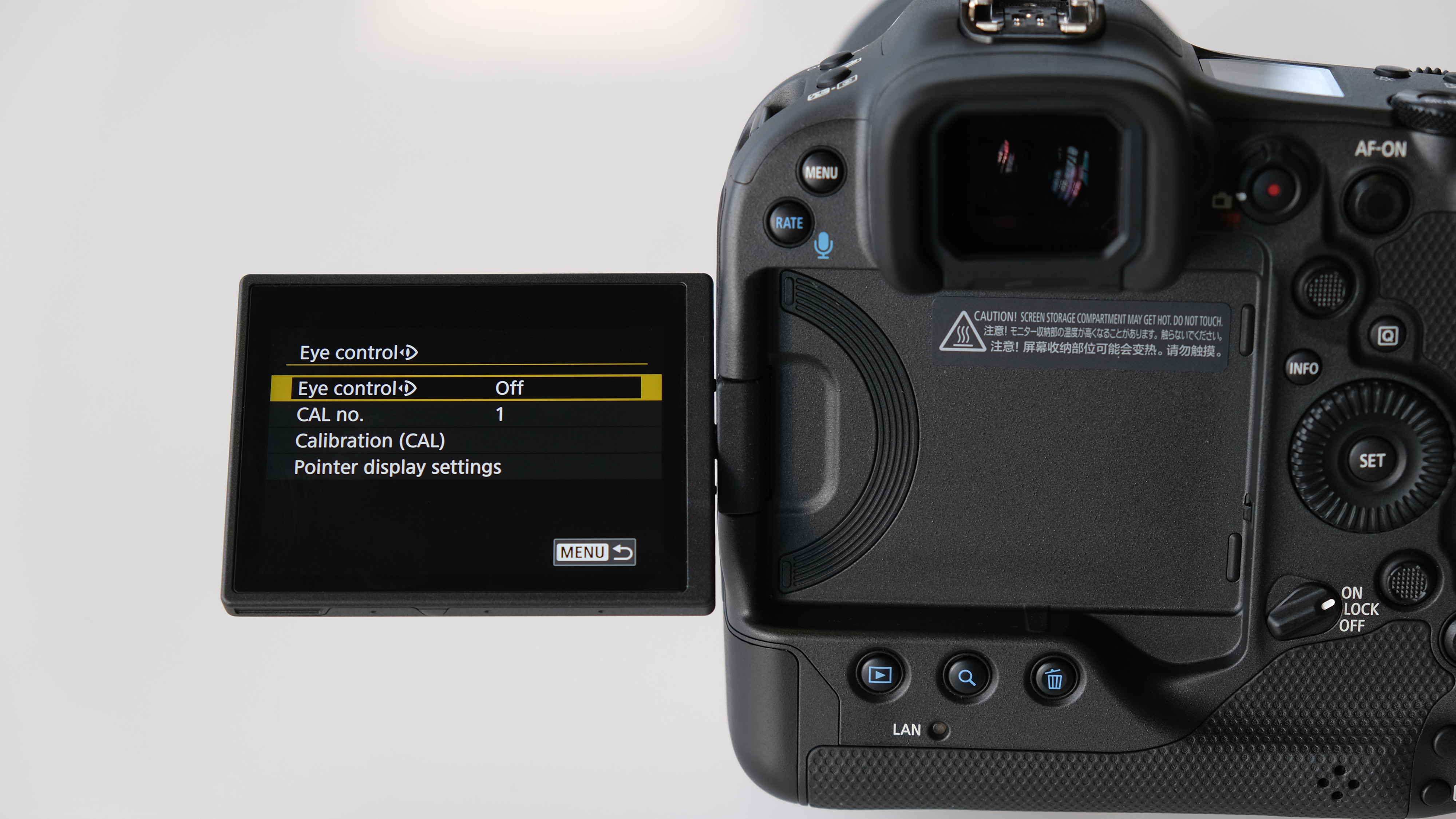
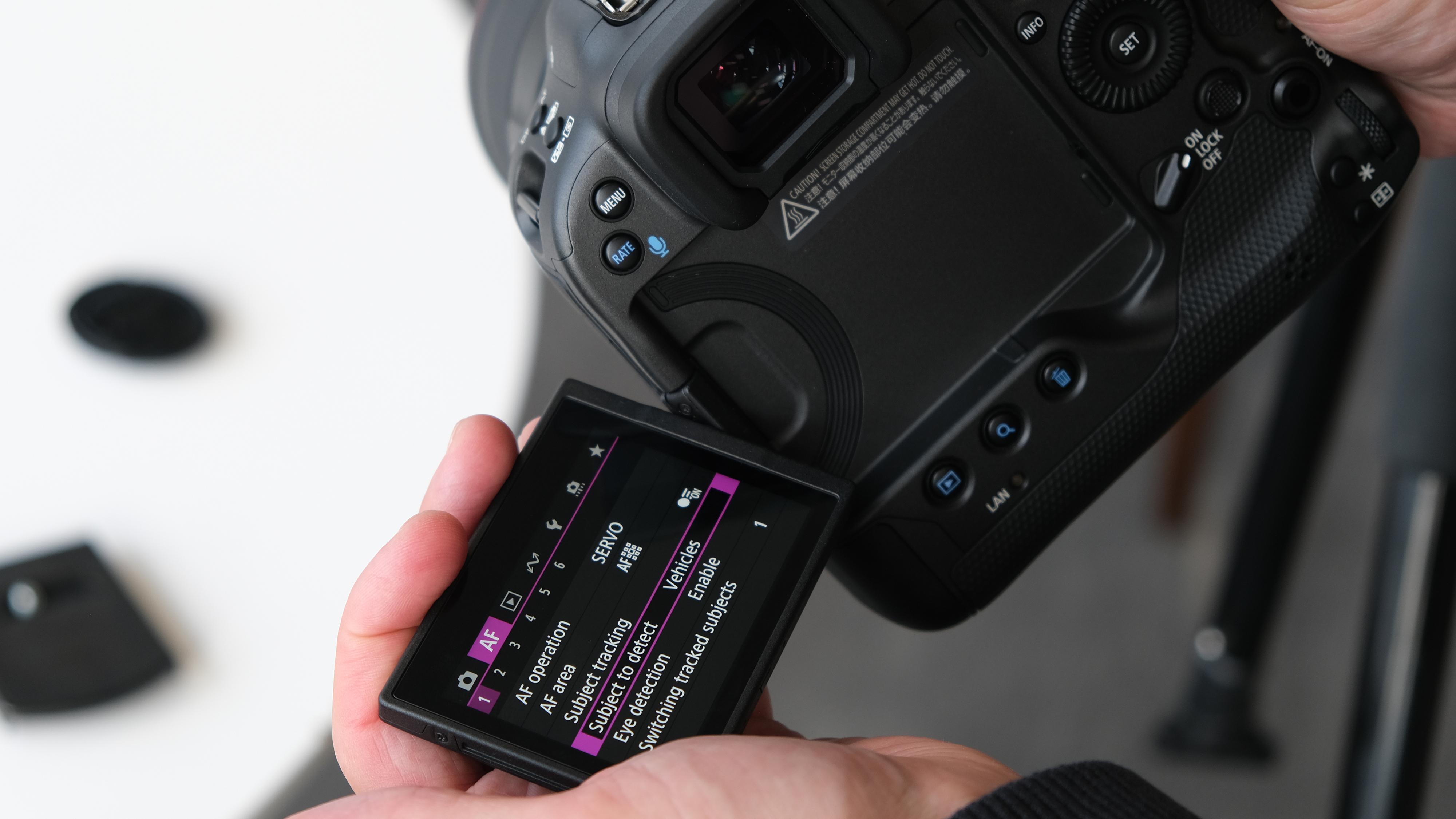

A more unexpected inclusion is the outstanding 3.2in vari-angle touchscreen, which has a super-crisp 4.1 million-dot resolution.
This blows the Sony A1's 1.44 million-dot, tilt-only rear screen out of the water, and its full articulation will be particularly handy for video shooters. It’s also 0.05in bigger than the screens on either the 1D X Mark III or the EOS R5, which you won’t notice, but has nearly twice the number of pixels, which you definitely will.
It's actually the first vari-angle screen we’ve seen on a camera that meets Canon’s pro standards for water and dust ingress, and consequently feels tough and well made, quite apart from giving you the welcome option to flip it over so it’s tucked safely against the R3’s body when you chuck it in a bag. It's also a big change from the Canon EOS 1D X Mark III's completely fixed rear screen, which was designed purely for sports snappers.
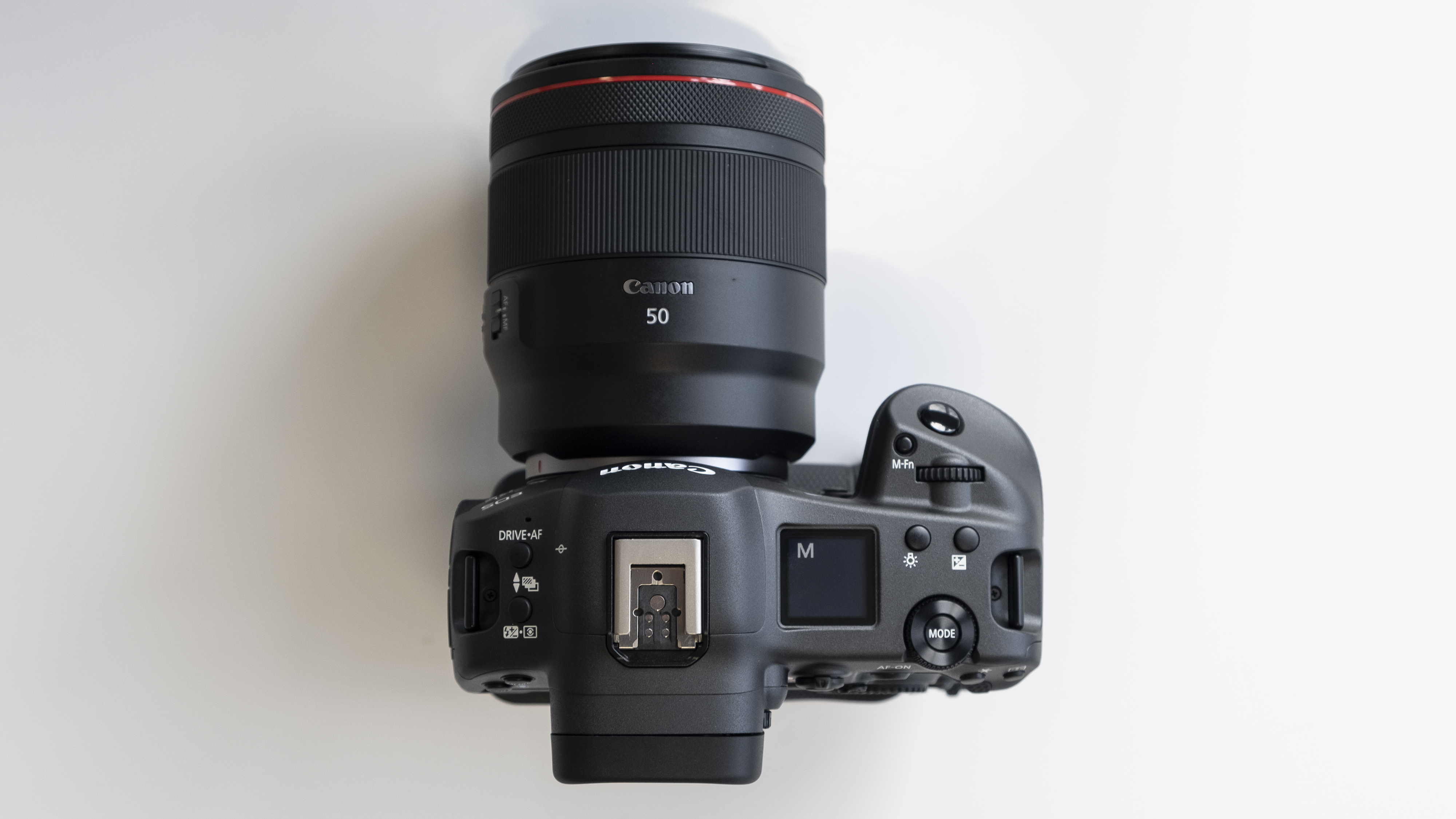
One new feature that we haven't seen on any other Canon camera so far is the new Multi-Function Shoe in the middle. This is interesting because, like Sony's Multi-Interface Shoe, it allows for high-speed, two-way data transfer between the camera and any compatible accessories that you mount on top of it.
Canon has announced a new Directional Stereo Microphone (DM-E1D) and Speedlite Transmitter (ST-E10) that are both fully compatible with the new shoe – which means they can draw power from the camera. The hot-shoe is the same size as Canon's standard hot-shoe, so you can use all your old accessories with it, but one downside is that it doesn't create a weather-proof seal – if you want full weather-proofing, you'll need an optional accessory.
Autofocus
- New Eye Control AF is more than just a party piece
- AF tracking now includes vehicles, along with humans and animals
- Lightning-fast subject acquisition
In the great mirrorless camera war between Canon and Sony, one of the main battles is autofocus – and the EOS R3 breaks new AF ground for Canon cameras.
Before we talk about our real-world experience, let's introduce the EOS R3's autofocus claims. Like the Canon EOS R5, it has the Dual Pixel CMOS AF II system, but there are a few differences this time. Canon says the EOS R3 is "the fastest EOS R series camera yet" in terms of focusing, trumping the R5 with its ability to focus in 0.03 seconds, compared to 0.05 seconds.
The EOS R3 is also the first Canon camera to have a 'vehicle tracking' autofocus mode. This is something we've seen previously on the Olympus OM-D E-M1X, and the R3's mode works in a similar way to that camera's Intelligent Subject Detection AF system, locking focus on rally cars, motorbikes and open-cockpit F1 cars so that you can concentrate on composition.
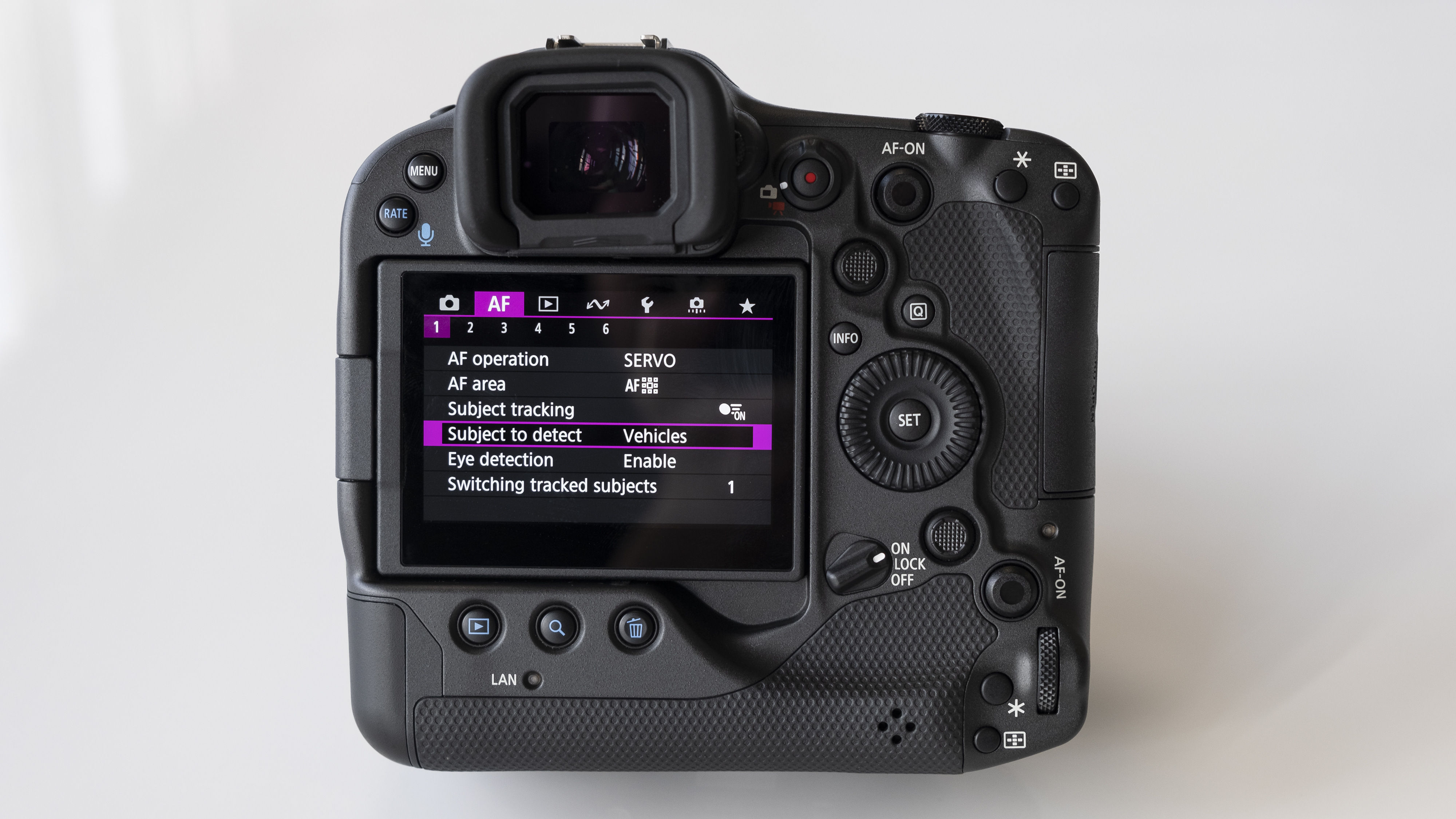
And how well do all these AF skills work in the real world? We certainly weren't disappointed – in fact, the autofocus is nearly impossible to trip up. We’ve been saying this about pro-grade cameras for some time now, but whether in poorly lit, strongly backlit, low-contrast or dynamic situations, the EOS R3 kept up with our subjects incredibly well.
We tried it with Canon’s RF-mount 24-105mm f/4L and the 70-200mm f/2.8L, and both pieces of current-generation glass produced sharp shot after sharp shot. If you shoot sports or wildlife, the EOS R3 could see you taking home more sharp frames than ever before. Like other cameras in the RF-mount range, the EOS R3 has a few tricks up its sleeve – people-tracking is an obvious inclusion, as is animal and vehicle tracking given, but the most unique one is Canon's Eye Control AF.

Despite sounding futuristic, this is actually a new version of the 'eye-controlled autofocus' system we saw back on the Canon EOS 3 SLR in the late 90s. It allows the camera to detect where you're looking in the viewfinder and move the autofocus to that point in the frame. The idea is that, in fast-moving scenarios, this will be quicker than using manual controls, and will let you concentrate on adjusting your exposure or composition. Canon says the system has been adapted from technology used in the company's medical division, and uses eight low-powered LEDs in the viewfinder to track your eye and overlay that information on the sensor.
We’re pleased to report that Eye Control AF selection is far more than a gimmick. It feels virtually magical – you can set it up in various ways, but the end result, where the R3 tracks exactly where you’re looking in the frame and drops the autofocus point straight on top of it, is amazing.
Not being glasses-wearers, we can’t say for sure whether Canon’s claim that it works with standard eye glasses is true, but in the event that you try and dislike Eye Control AF, the touch-sensitive AF point selection button has been pinched wholesale from the 1D X Mark III, and it works just as well here.
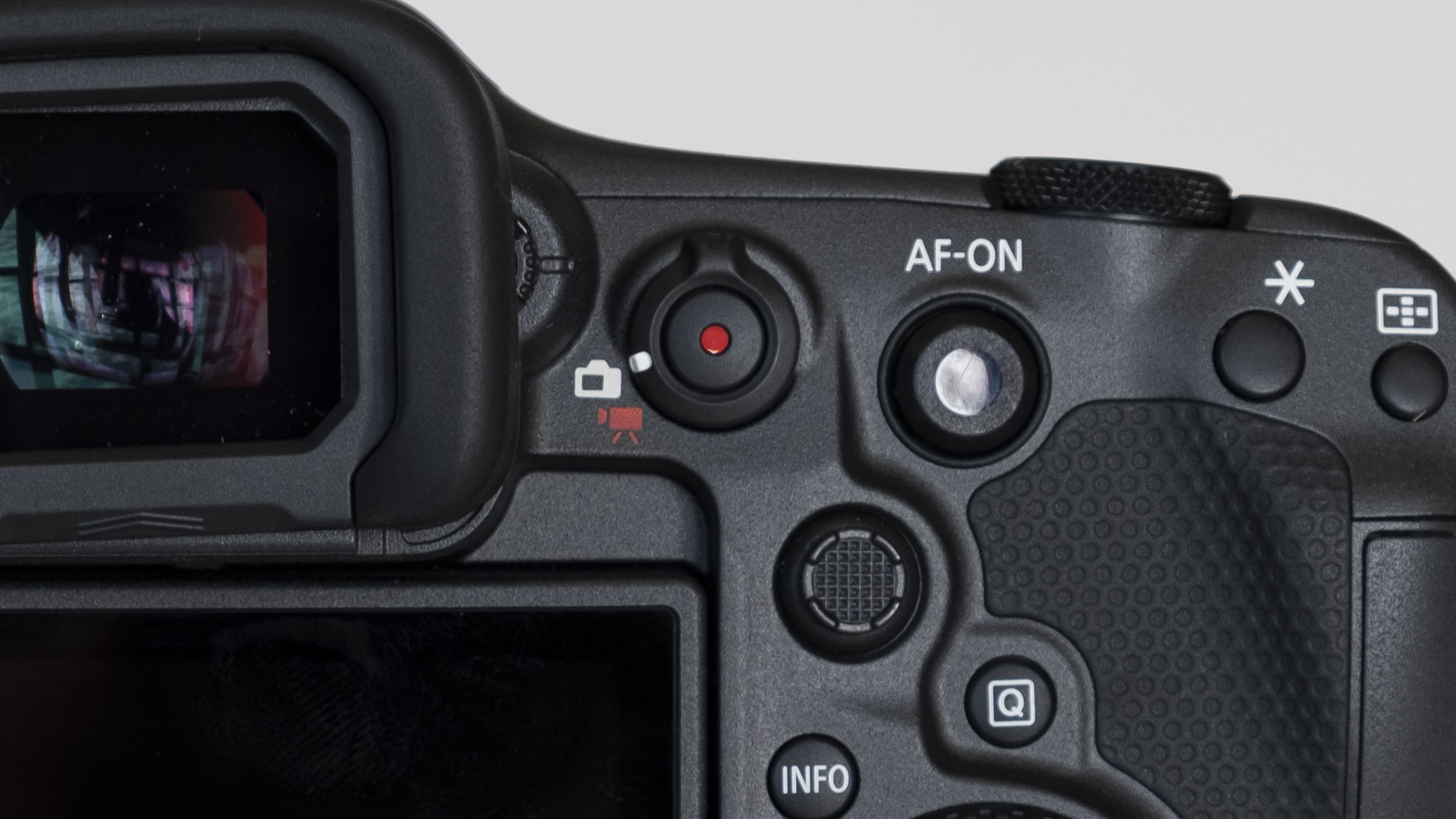
When the camera is choosing its own AF points, it can select anywhere in the frame; if you opt for manual AF point selection you can choose from 100% of the width of the frame or 90% of the verticality. Overall, there are 4,779 different AF points available (in stills mode; this drops a little to 3,969 in movie mode).
The final AF performance improvement over the Canon EOS R5 is slightly better low-light performance. Canon says the EOS R3 can focus in lighting conditions as low as -7.5 EV (think a night-time scene with minimal moonlight), which is an improvement on the EOS R5's quoted low of -6EV. Bear in mind, though, that both of these figures are based on shooting with an f/1.2 lens at ISO100, making it more of a theoretical ceiling than a day-to-day reality.
Overall, then, no camera we've seen gives you more options for controlling your autofocus than the EOS R3. Between the Smart Controller, touchscreen, AF joysticks and Eye Control AF, there's now very little excuse for not nailing your focus.
Specs and performance
- New 24.1MP backside-illuminated stacked CMOS sensor
- 30fps burst shooting (raw or JPEG) with electronic shutter
- Only 12fps continuous shooting with mechanical shutter
Our short review of the Canon EOS R3's performance is 'blimey'. But the longer one requires a little context. The Canon EOS R3's most significant feature is its new 24.1MP sensor. This has been both designed and manufactured by Canon, despite earlier rumors that it would be made by Sony. Crucially, it's also Canon's first 'stacked' sensor.
Sony has pioneered 'stacked' full-frame sensors, the layered structure of which allows more complex circuitry to be built behind the photosites. The result? Higher data read-out speeds, which brings benefits like faster burst-shooting speeds and reduced 'rolling shutter' in video. And that's certainly the case with the EOS R3.
In a world where the Sony A1 is capable of shooting 50MP photos at 30fps, the EOS R3's 24.1MP resolution might sound disappointing. But unless you regularly crop into your photos a lot, that's more than enough for most photographers – and the professionals who've been pinning their livelihoods on the 20.1MP Canon EOS 1 DX Mark III certainly haven't complained.
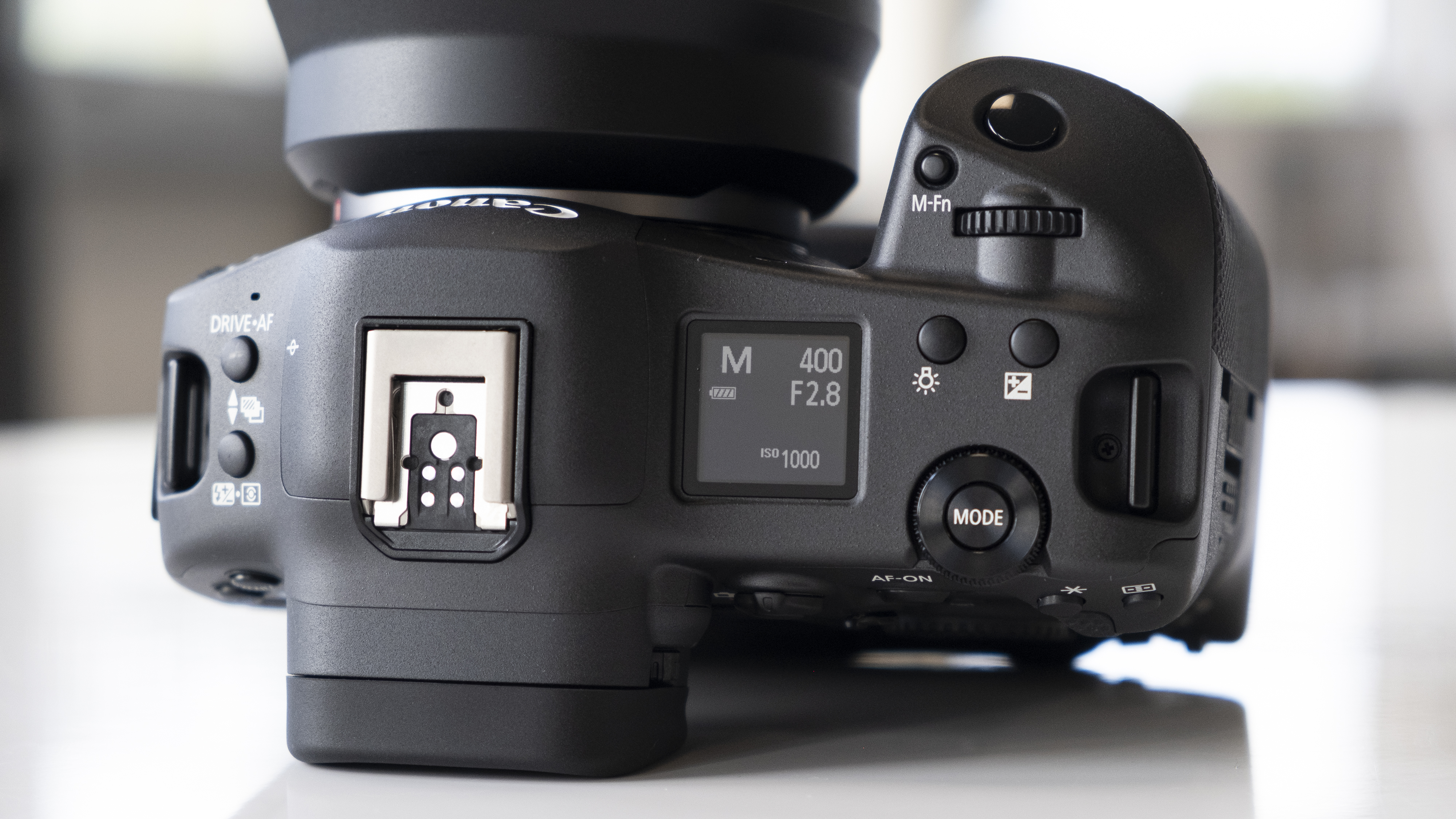
This means the Canon EOS R3 is more of a rival to the Sony A9 II, which has a 24.2MP stacked full-frame sensor, than the A1. And in a few specs battles, the EOS R3 comes out on top.
In very specific conditions, it can hit continuous shooting speeds of 30fps with AE/AF tracking when using the electronic shutter, and maintain that for 540 JPEGs or 150 raws (in other words, 18 seconds or five seconds of shooting respectively).
In this 30fps stills mode, it’s actually impossible to only shoot a single frame – you just can’t get your finger off the shutter button fast enough. That means you won’t want to use the EOS R3 at full chat in more than a handful of situations, but when push comes to shove and you simply can’t afford to miss the shot – we’re thinking the flower chuck at a wedding, the moment the leopard springs from its cover, the instant the sprinter crosses the finish line – the R3’s continuous mode leaves you perilously short of excuses.
There are limitations – you can only reach 30fps if you’re using the R3 with its shutter set to electronic, and although rolling shutter is extremely well-controlled, it’s not an impossibility if you’re really whipping the camera side-to-side as you shoot. If you’re wedded to the haptic feedback and authentic 'crack' of a mechanical shutter, you’ll have to live with the R3’s relatively normal 12fps. There are other cameras out there with faster mechanical shutters, not least the 1D X Mark III (16fps) and even the EOS-1D X Mark II (14fps).

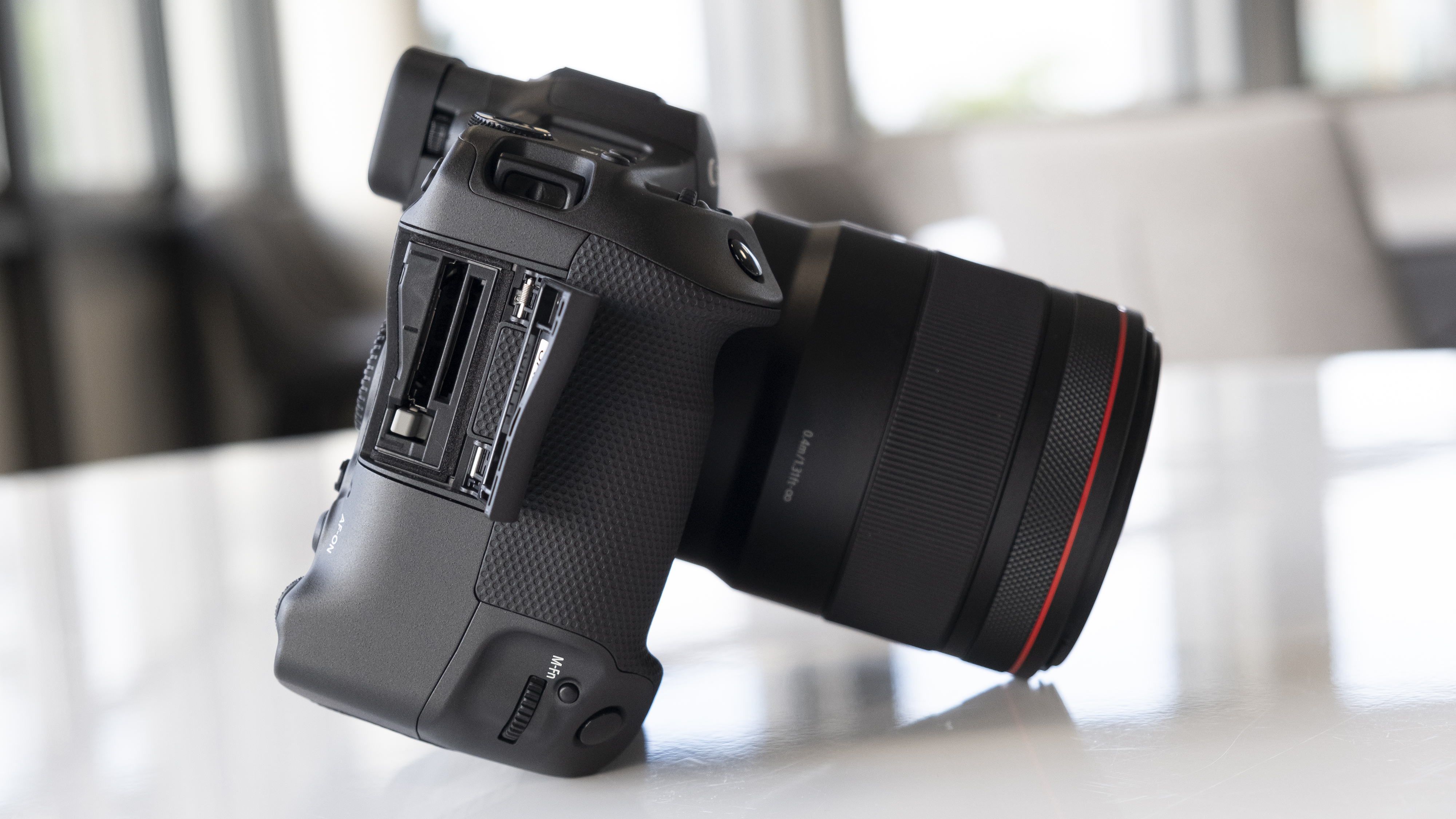

Beyond the ability to hit staggering shutter speeds of 1/64000th of a second, the electronic shutter can also be synced with external flashes (up to 1/250th of a second), something that was previously only possible with mechanical shutters. Like Sony, Canon has also added Flicker detection and High Frequency anti-flicker shooting modes to help detect and correct flickering indoor light sources.
Another big benefit for handheld shooting over the Canon 1D X Mark III is the inclusion of in-body image stabilization. When you use the EOS R3 with compatible RF lenses, you'll get shake reduction of up to eight stops. This allows you to preserve still image quality and, if it works as well as in the Canon EOS R5, get reasonably smooth video without a gimbal.
We need to talk about battery life, because all this performance – the two fantastic displays plus the processing horsepower needed to keep it all moving – doesn’t come cheap. You can fairly well ignore the CIPA-generated numbers: the spec sheet says the R3 will shoot just 620 images using the EVF; or precisely 20.6 seconds of shooting the R3 at its fastest 30fps speed.
This isn’t true; we saw far more images on a single charge than that. But it’s definitely fair to say that on a demanding day of shooting, you can expect to watch the battery indicator drift steadily downwards, to the point that having a spare LP-E19 battery on hand is a sensible precaution against the camera conking out just as the image of the day presents itself.
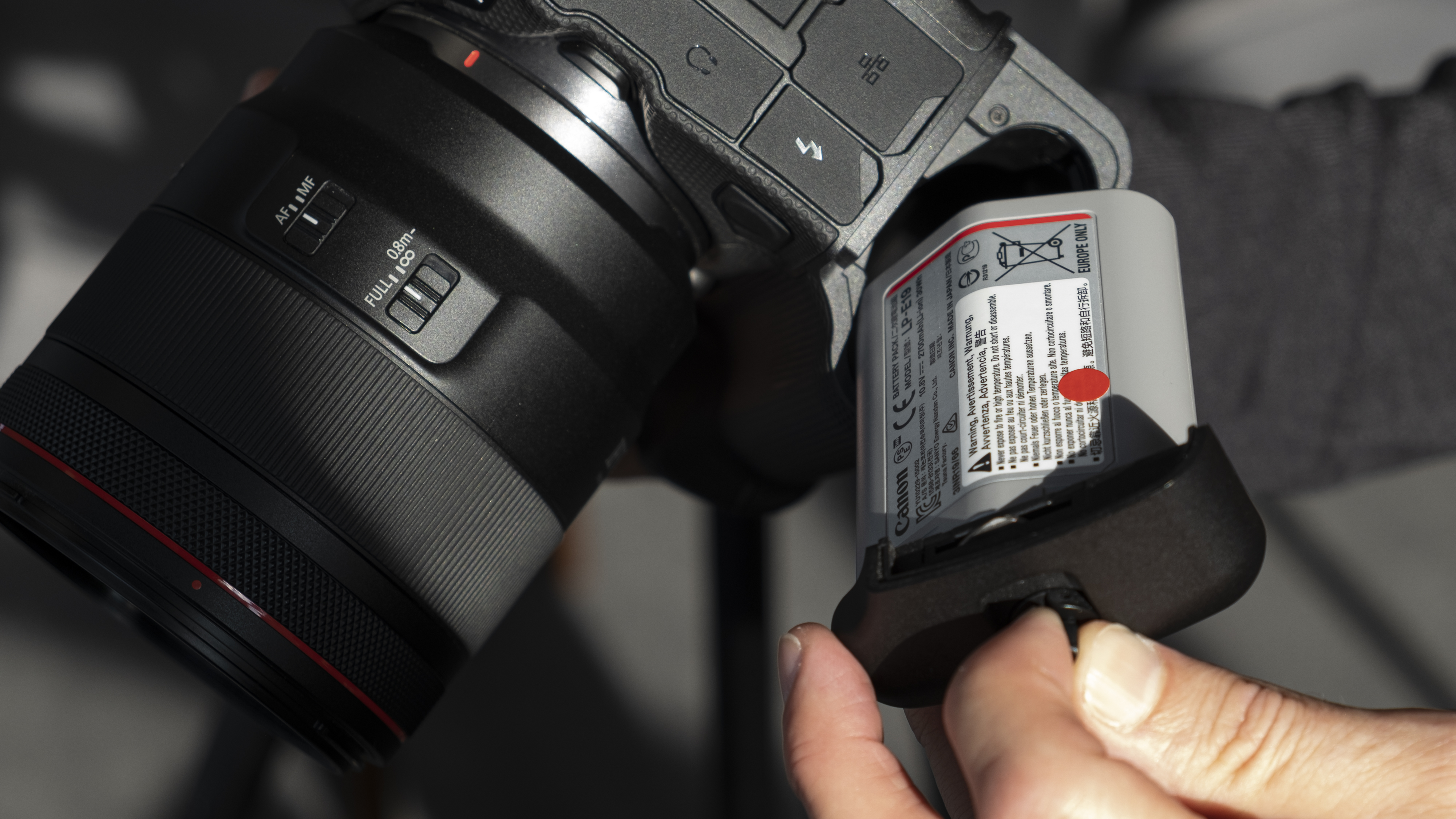
Pleasingly – as with the EOS R6 and R5 – Canon hasn’t introduced a new battery system here, so if you already own an EOS-1D X Mark II or Mark III, you already have a compatible battery. In fact, if you own a full-height Canon body back as far as the EOS-1 Mark III (2007), those batteries will fit, too. That means there’s quite a lot of choice in terms of new batteries, second-hand units, and third-party units, so getting a spare battery for emergencies doesn’t need to be the expensive shopping trip Canon wants to put you through for a new LP-E19.
Because the Canon EOS R3 is designed very much for pro sports photographers, it also goes big on connectivity. Alongside Bluetooth 5.0 and 5Ghz Wi-Fi, you also get a Gigabit Ethernet port for firing images via FTP servers. Pro snappers will also be able to use Canon's Mobile File Transfer (MFT) app to transfer images to remote servers via their smartphone or tablet.
This will combine nicely with a new accessory, the Smartphone Link AD-P1, which will let you mount your iOS or Android phone on the optional Multi-Function Shoe Adapter. While most of this will be overkill for the average photographer, full-time agency photographers will definitely enjoy bathing in the EOS R3's generous connectivity.
Image and video quality
- Incredible images up to high ISOs
- Fantastic dynamic range with beautifully balanced colors
- Shoots oversampled 4K/60p video and 6K/60p raw video internally
It’s fair to say that if you own an EOS R5 or R6 and want an upgrade in image quality, the EOS R3 doesn’t offer great bang per buck. Its full-frame, 24MP stacked CMOS sensor is, by any measure, a cracking one. But if a revolution in dynamic range and low light performance is possible (we haven’t seen evidence of that yet), then this isn’t it.
That’s not to say images aren’t good quality; they’re fantastic. Canon’s legendary mastery of color processing is in evidence, with the R3 returning a set of well-balanced, good-looking images. It’s amazing for low light photography as well – compared to the EOS R5 it adds a stop of ISO at the top end, going to ISO 102,400.
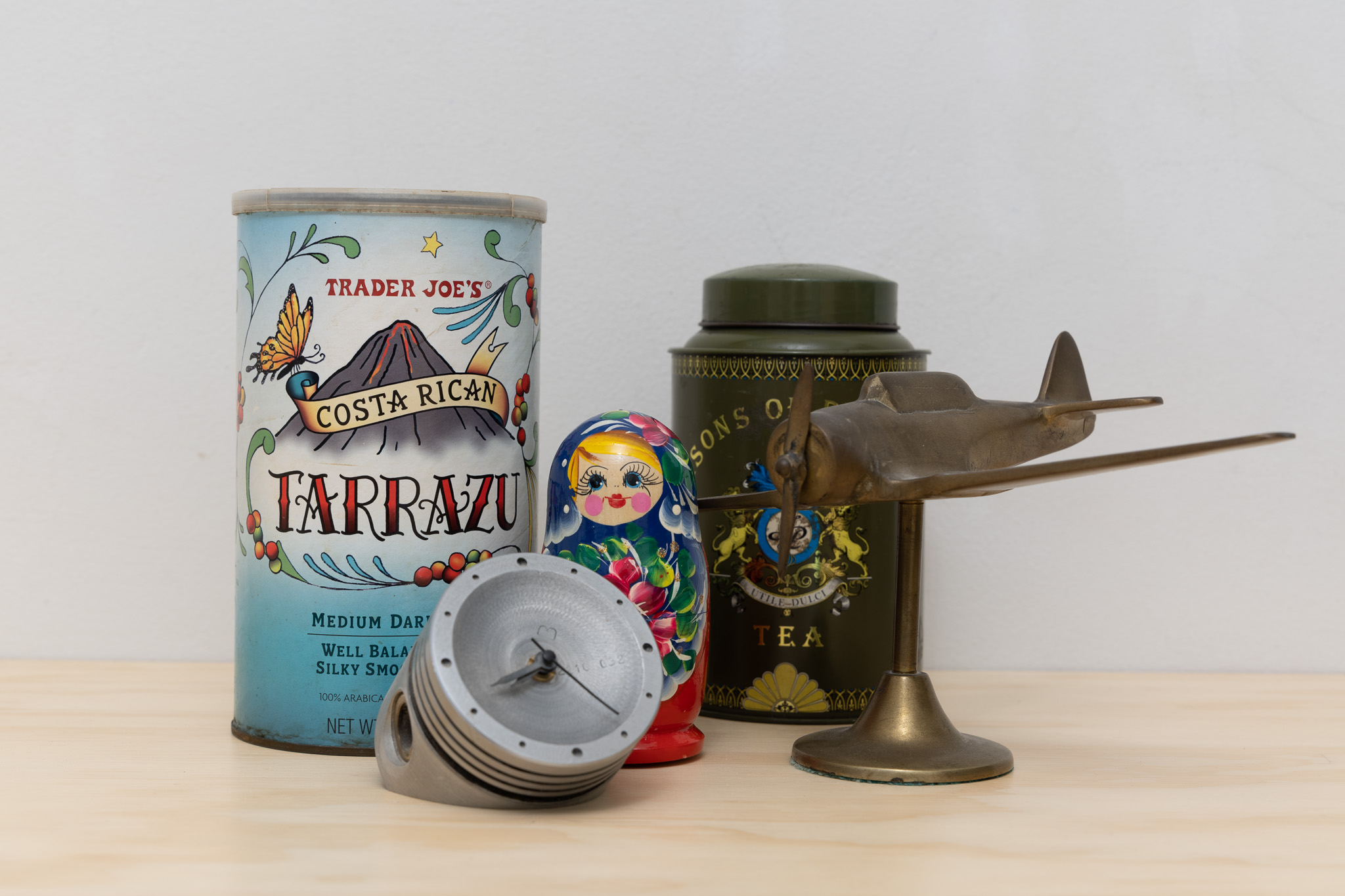
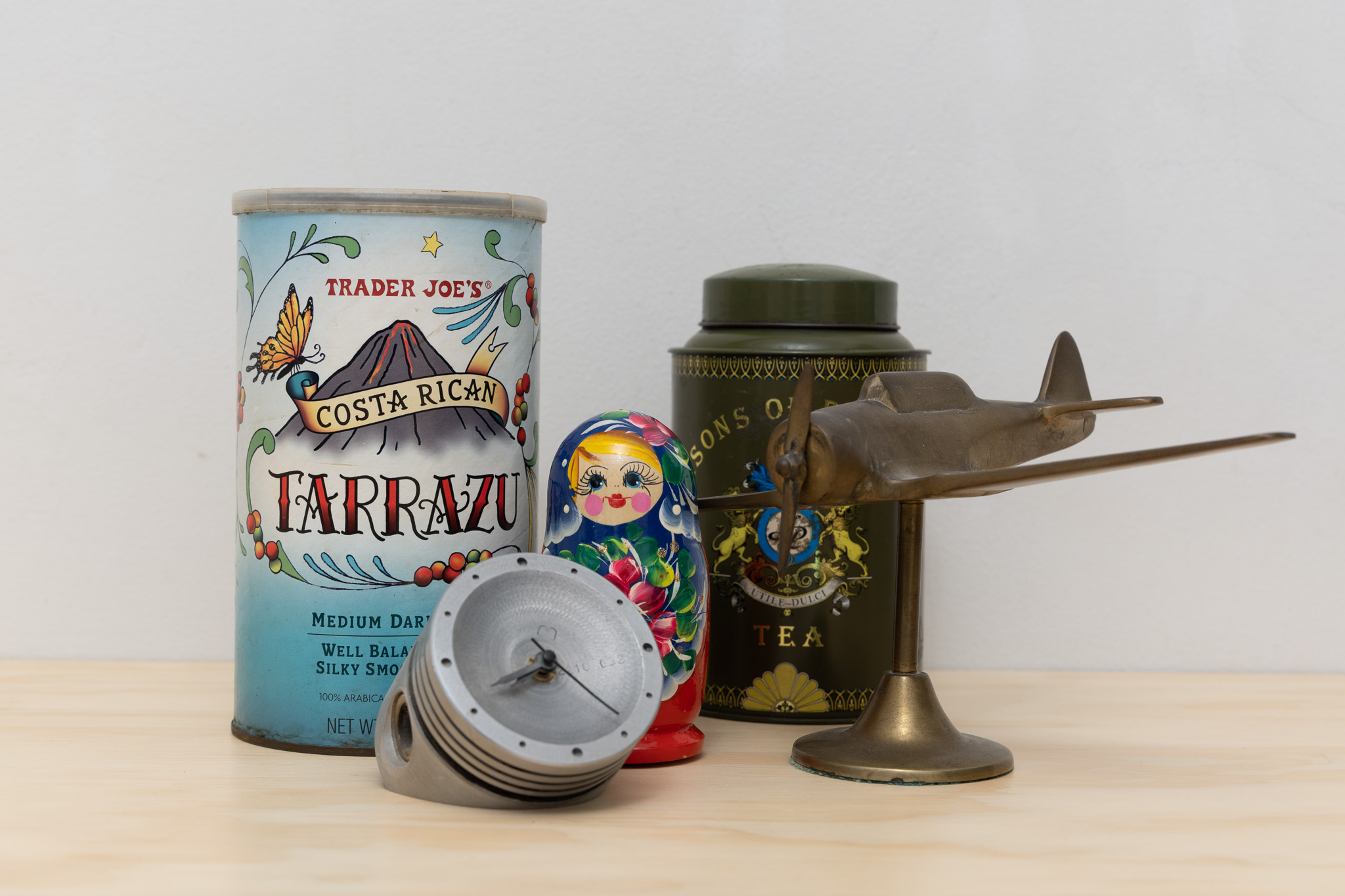
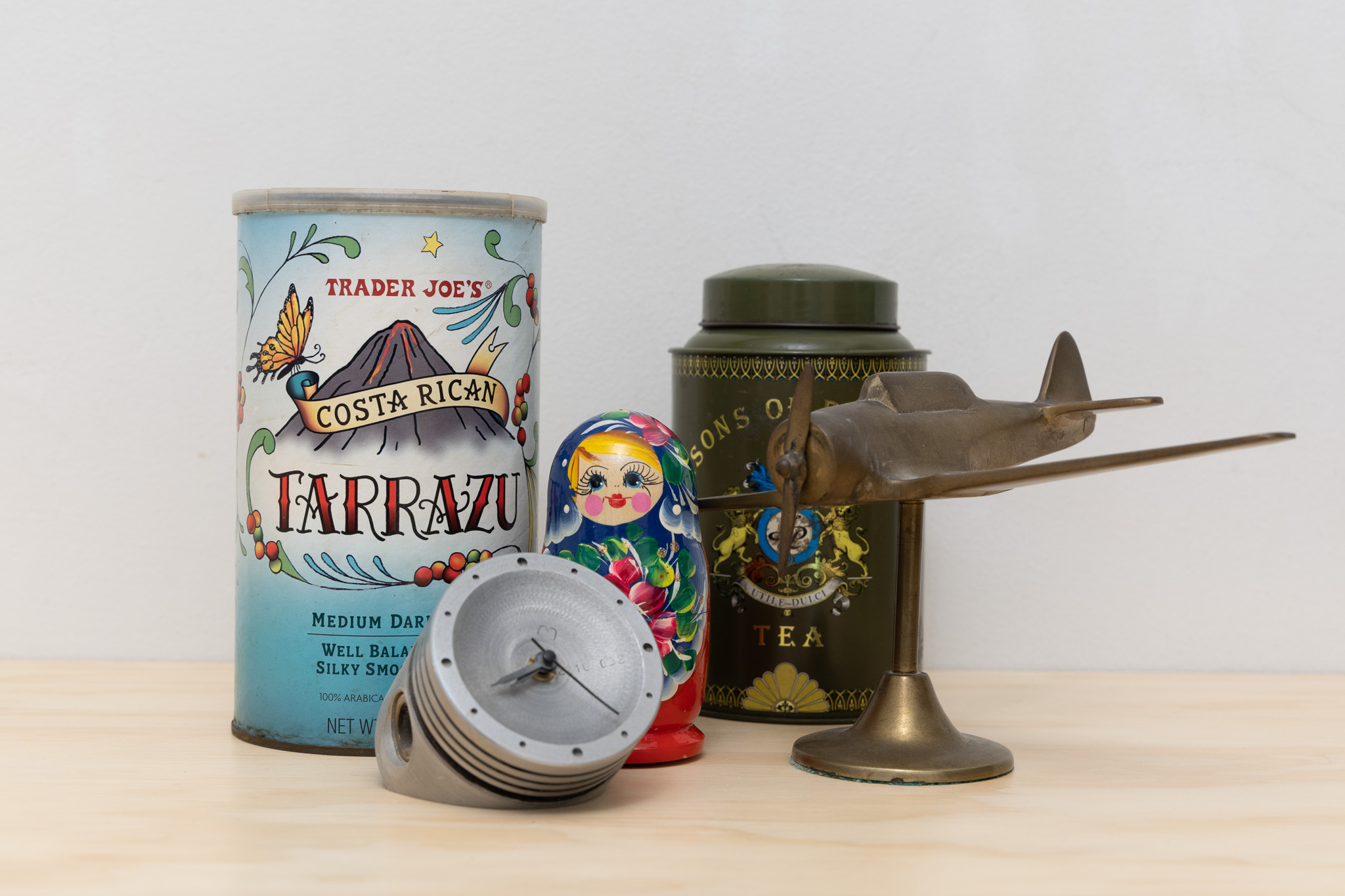








A set of test images (above) confirmed what our field tests suggested: ISOs to 1600 are indistinguishable; push it another stop to ISO 3200 and you’ll see the barest amount of noise creeping in in detail-free areas. Keep going and ISO 12,800 produces some fine, filmic-looking grain, but it’s really only around ISO 51,200 that you’ll see cloudier-looking noise in your images.
We would say images at this setting are definitely usable, though, making the R3 a potential world-beater when it comes to press photography, astrophotography, sports in poor weather, sports in good weather, or weddings. It’s a camera you can throw the book at and be sure that you’re creating dependable, usable images at ISOs that would have been unthinkable, if not unreachable, five years ago.
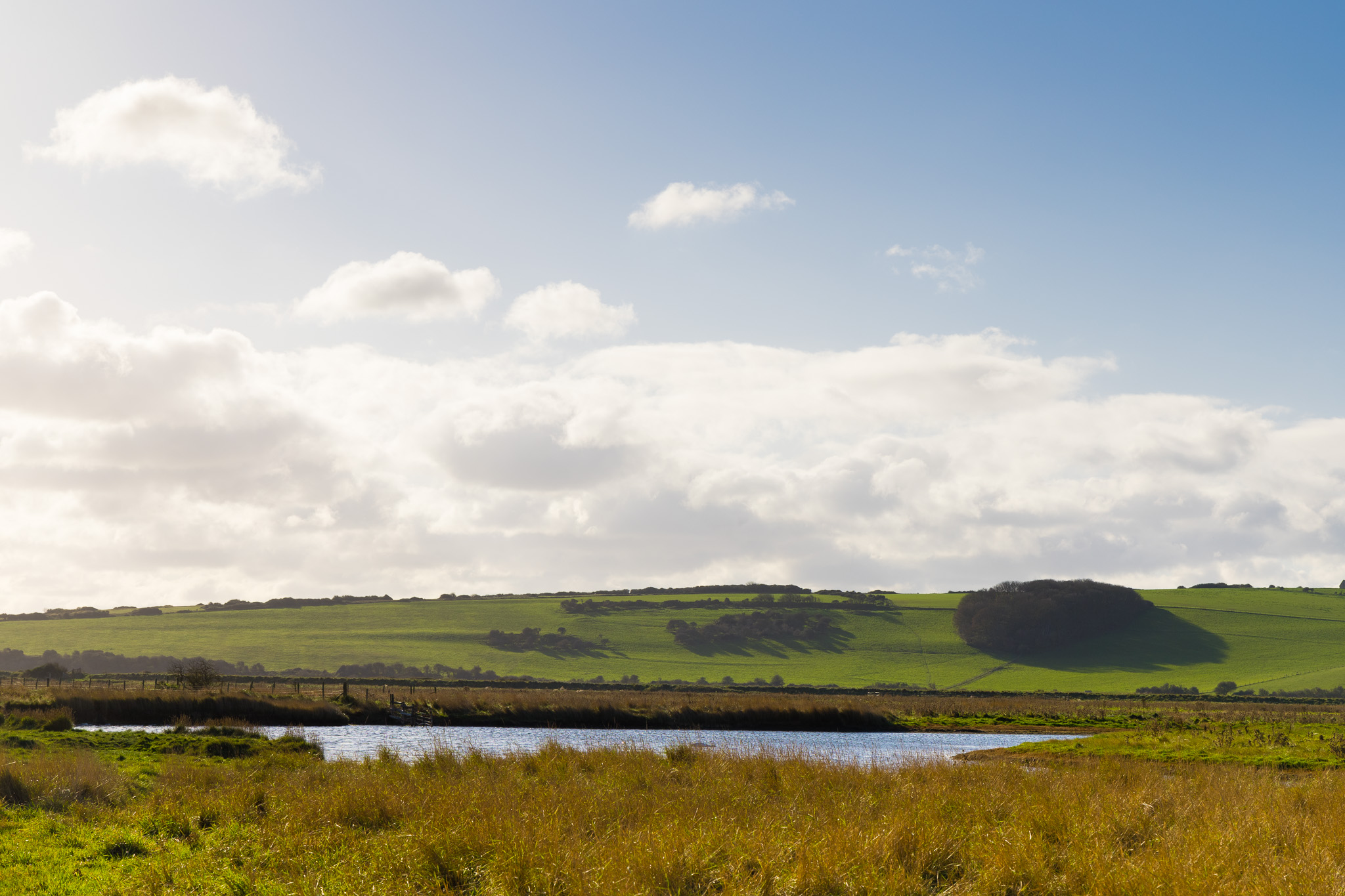
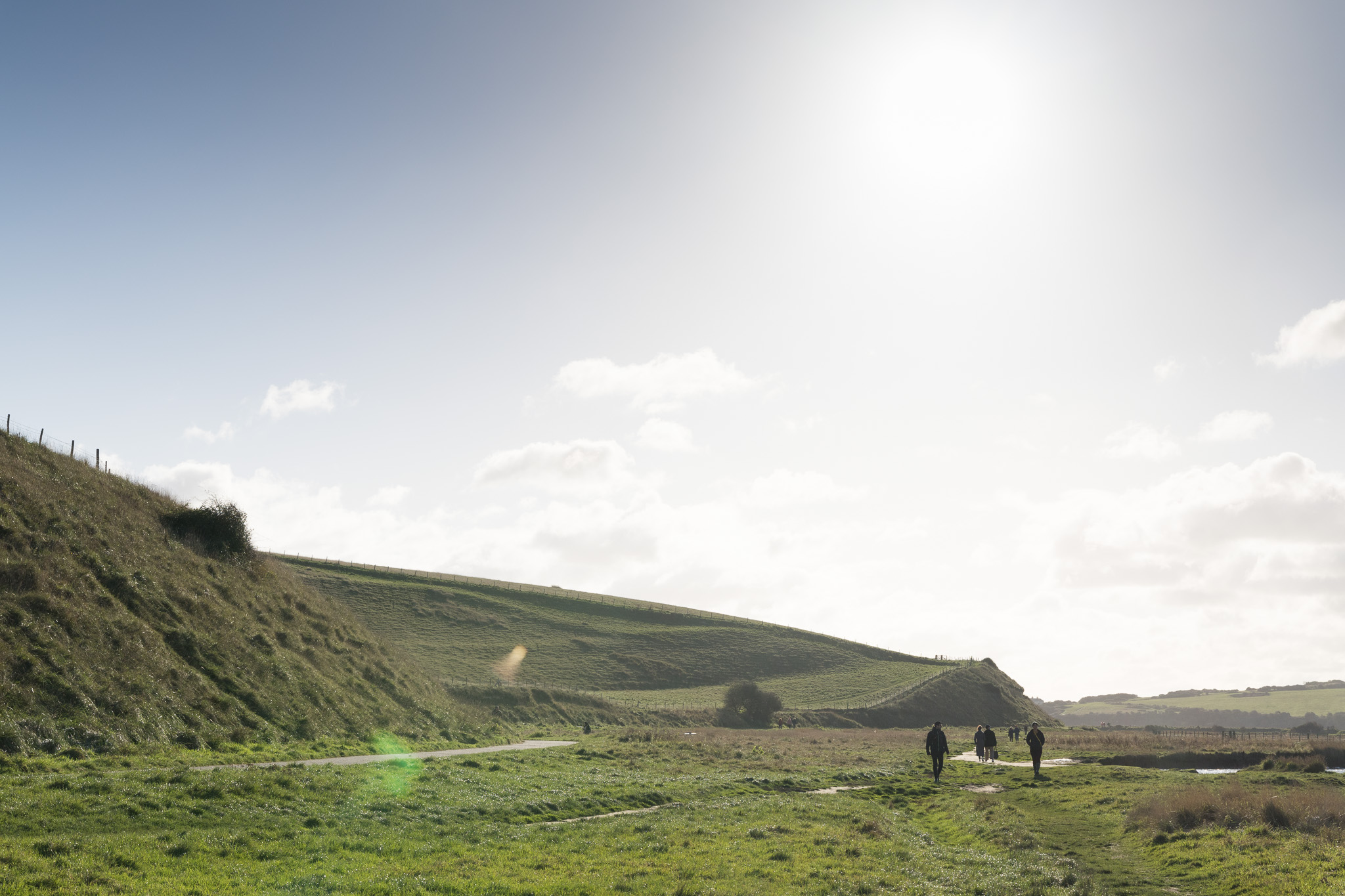
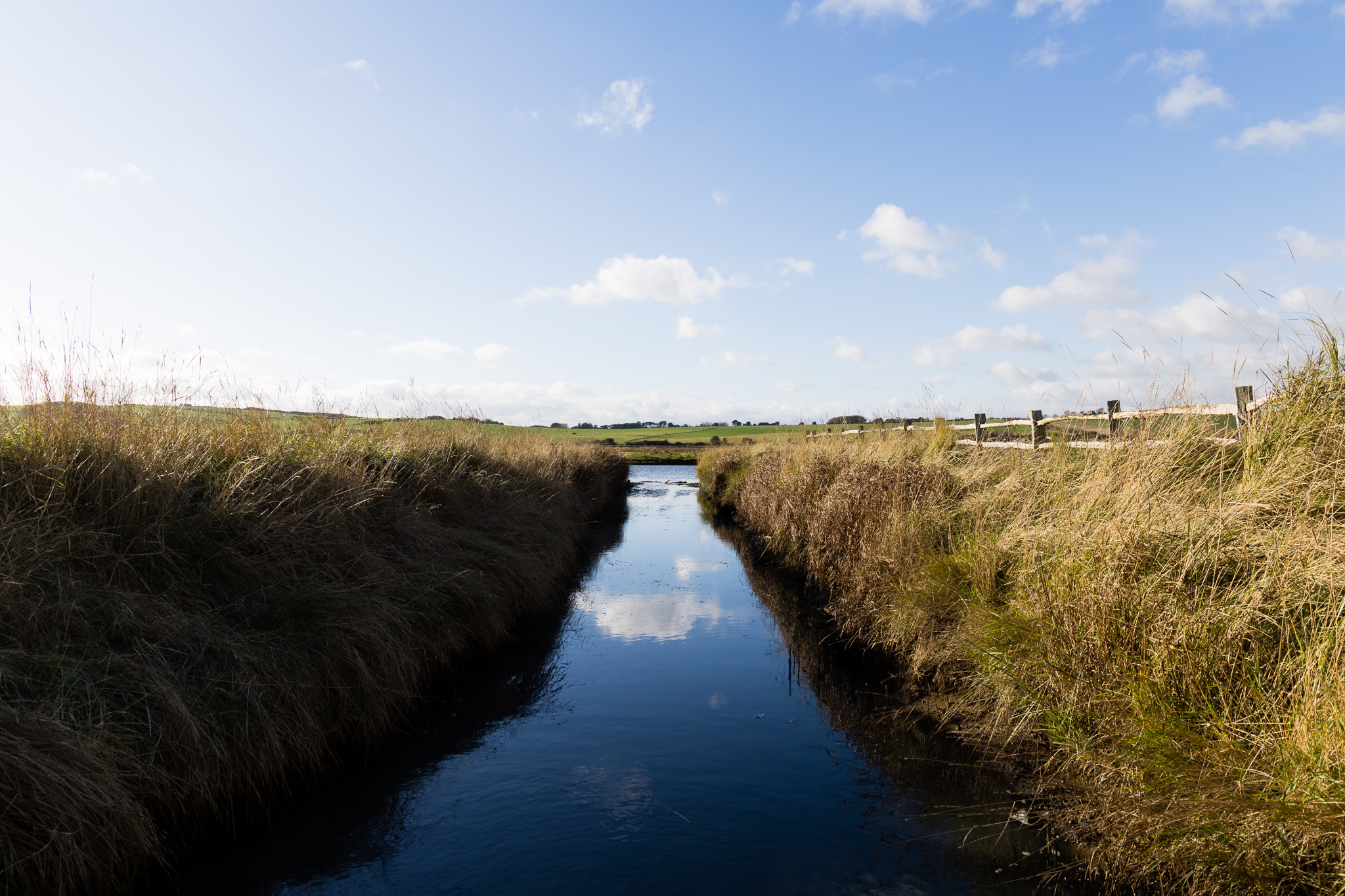
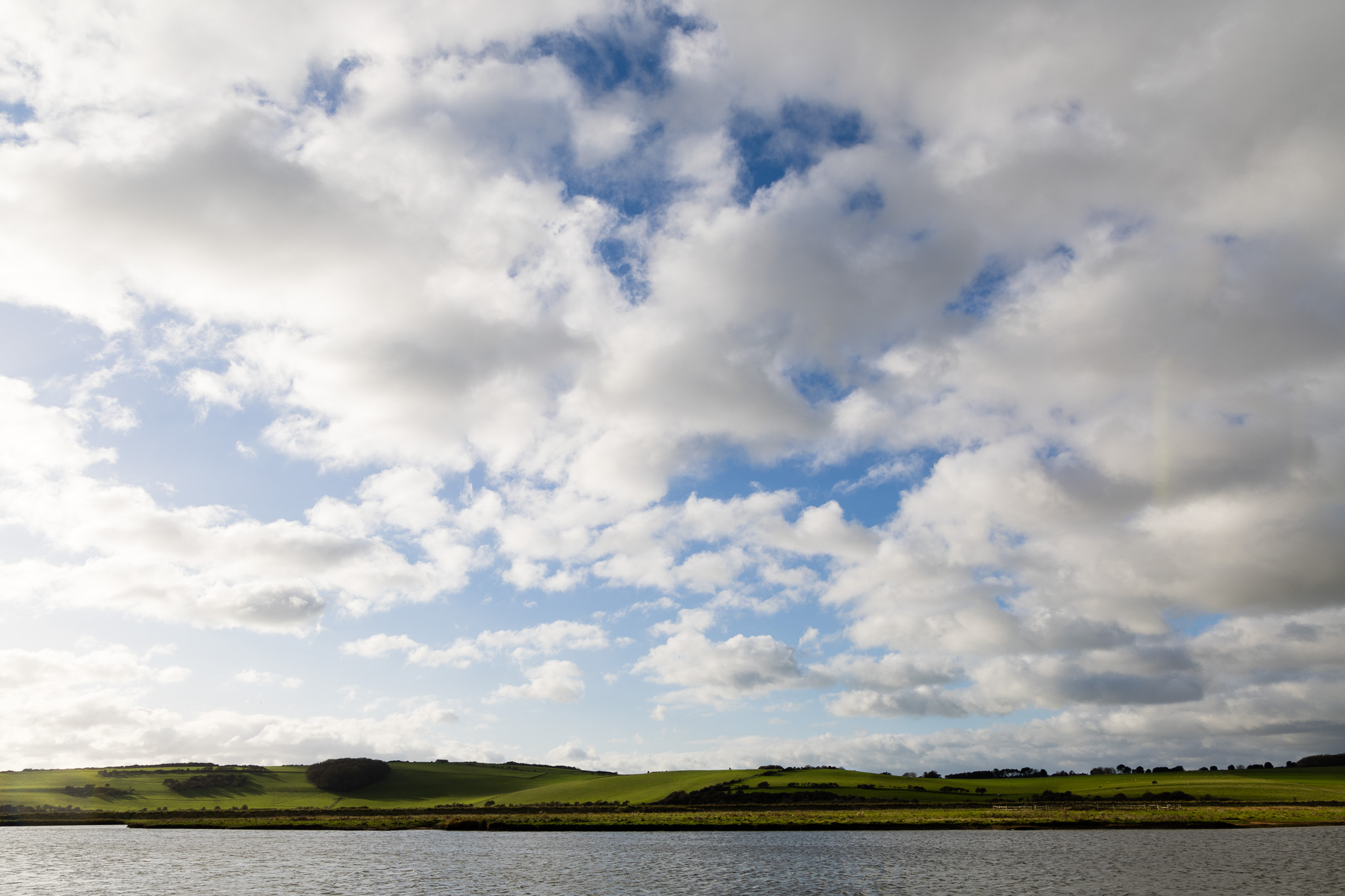

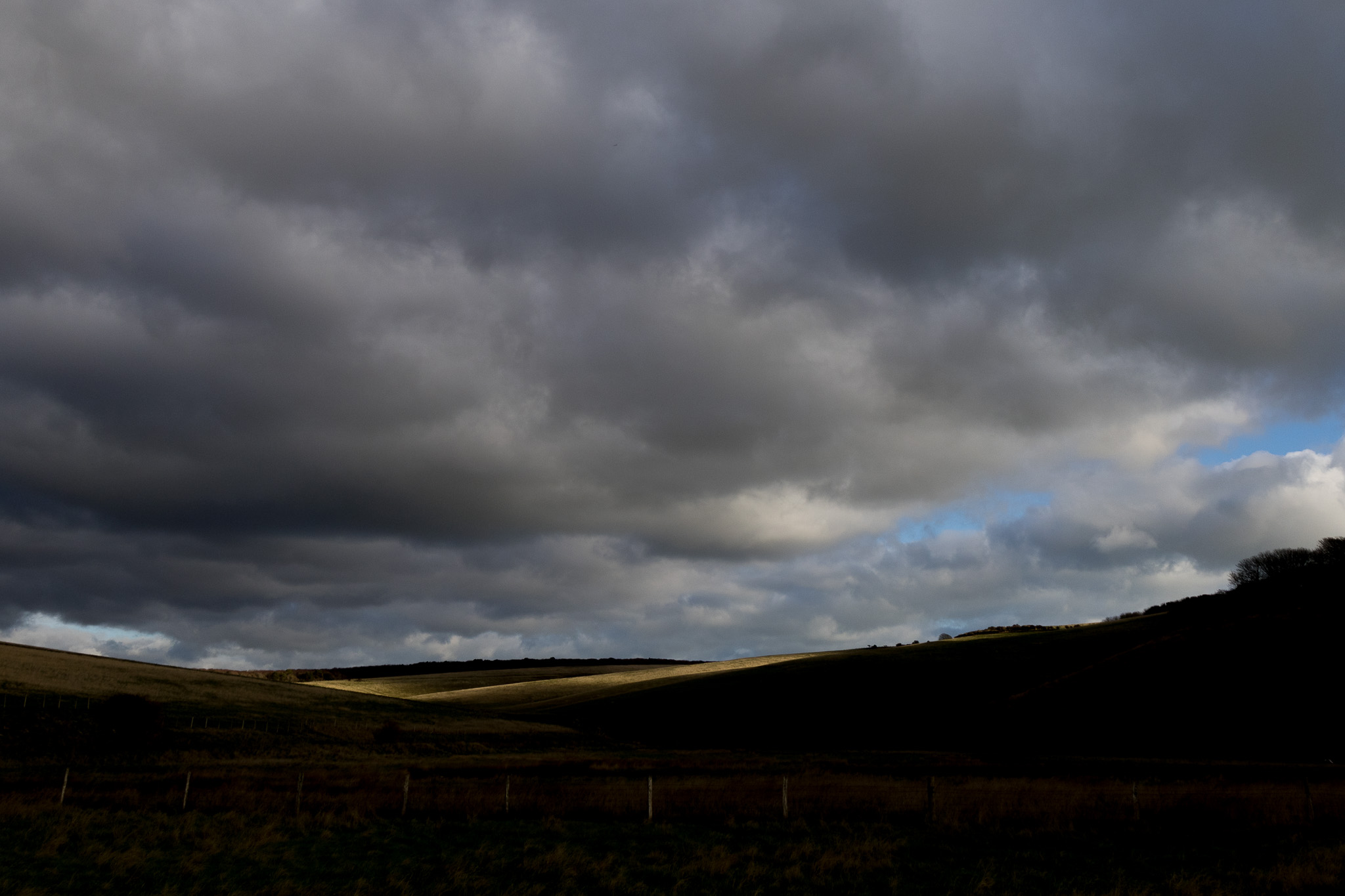
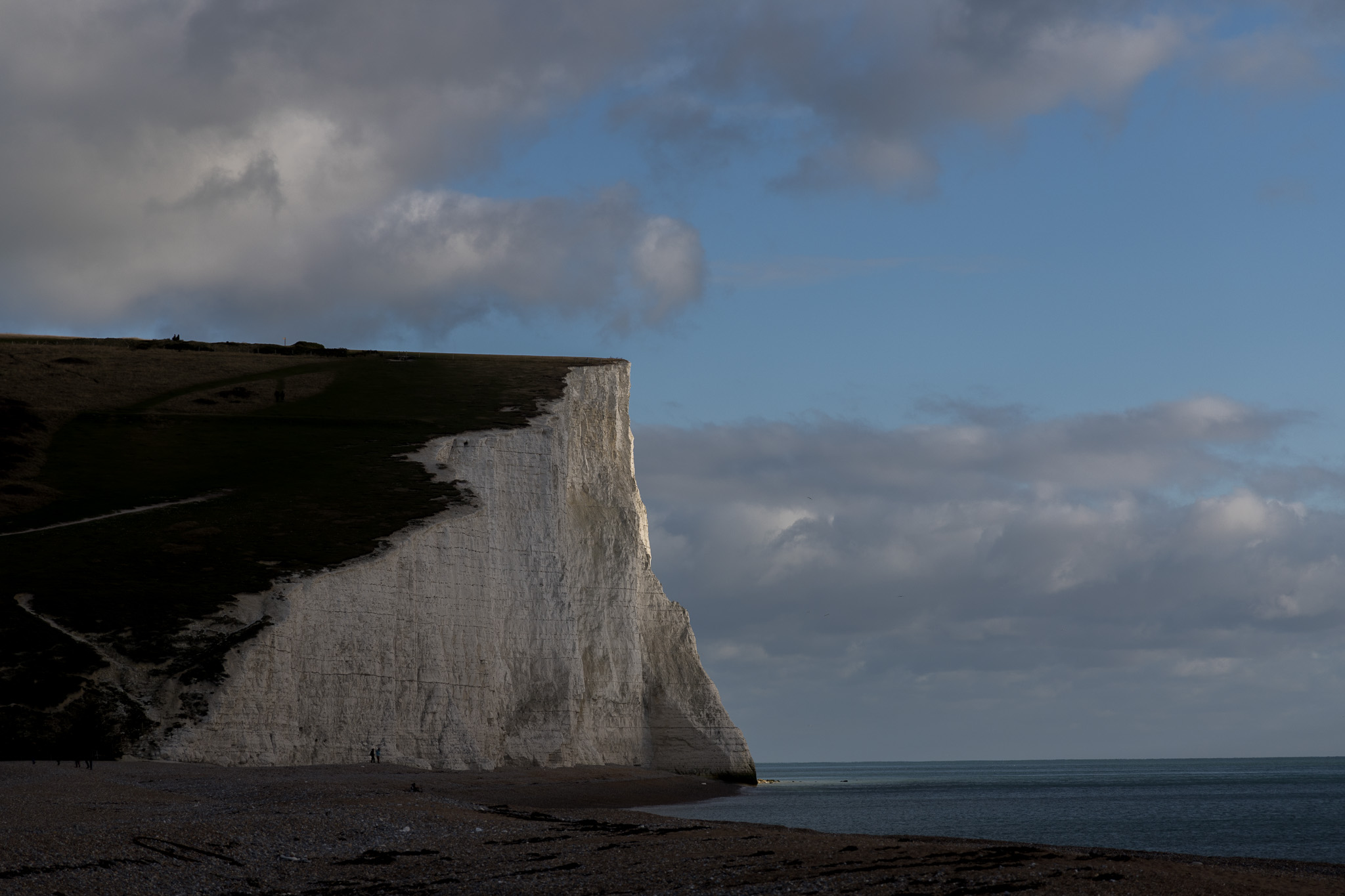

Canon was relatively quiet about the EOS R3's video powers in the run-up to its full launch, but they're far from a footnote. It's a powerful hybrid camera that can unusually shoot raw video internally (at 6K/60p, using the full width of the sensor) along with oversampled 4K/60p video.
The benefit of oversampled video is that it tends to have more detail and less noise – and as you can see in our sample video, that's certainly the case. The EOS R3's video also has very well-controlled rolling shutter, thanks to that new stacked sensor, although it's not impossible to see the effect if you're moving the camera very quickly.
When shooting in 6K raw, you can opt to shoot in the CRM (Cinema Raw Light) format, which helps produce relatively manageable file sizes without coming at the expense of dynamic range. Color graders will also be pleased to see support for the C-Log 3 format for malleable 10-bit files, while the overheating issues that dogged the Canon EOS R5 before its firmware fixes are less of an issue with the EOS R3.
This is partly because there's more room in the R3's body to spread its components out, and also because of its lower-resolution sensor. Canon claims you'll be able to shoot for six hours at a time (assuming you have enough juice) when shooting standard frame-rates, and for up to 1.5 hours in the high 120p mode.
Handily, you can record video to both the CFexpress and UHS-II slots simultaneously to create a backup, and the EOS R3's video credentials are further bolstered by that new Multi-Function Shoe, which can power accessories like the new Directional Stereo Microphone DM-E1D.
Should I buy the Canon EOS R3?
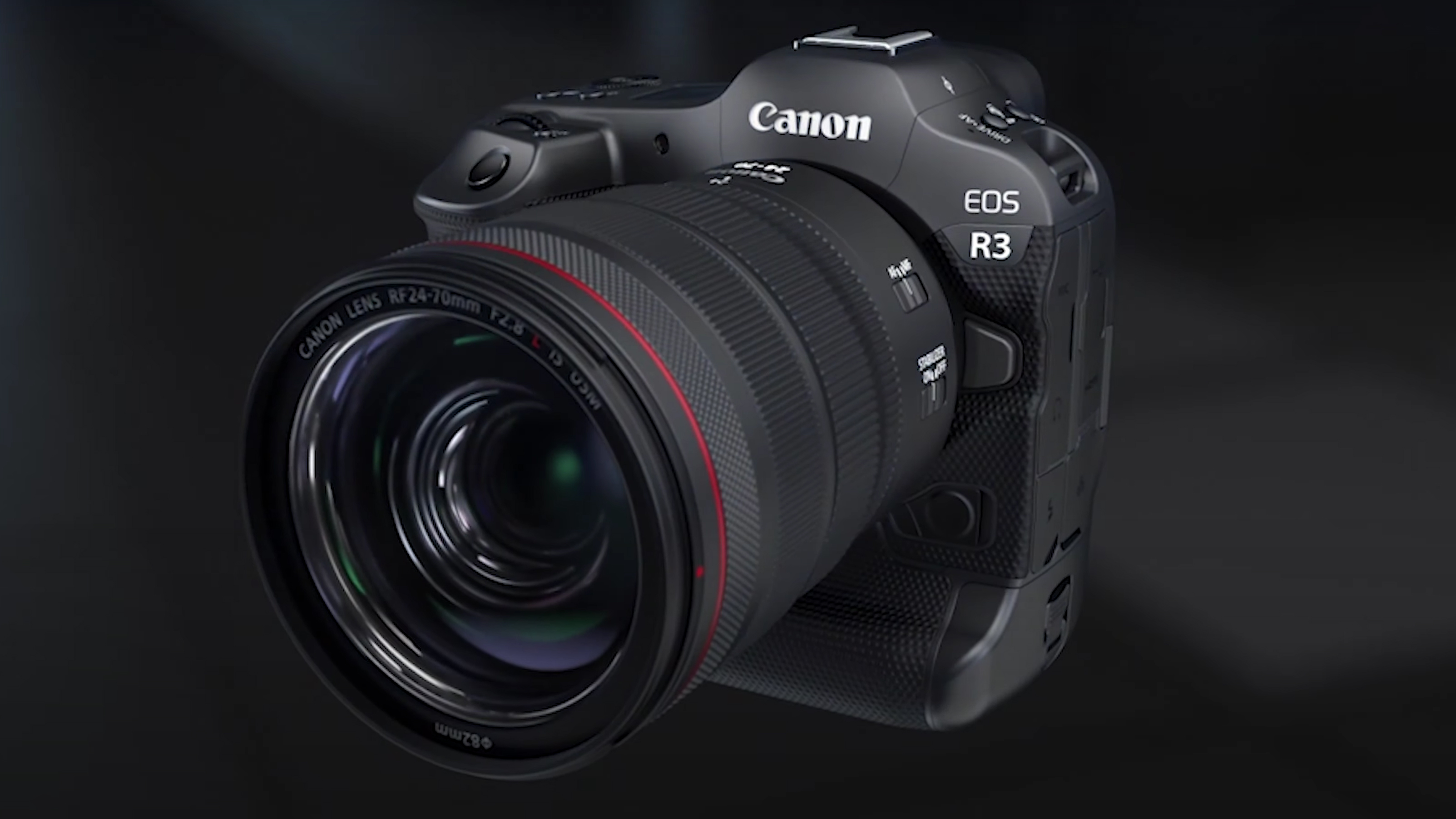
Buy it if...
You're a professional sports or wildlife photographer
The EOS R3 is built for speed – if that's more of a priority to you than resolution, it's the best mirrorless camera around. It can shoot full-quality raw files at 30fps, and the autofocus system is incredible. Its buffer and lower-resolution files are also advantages over its rivals.
You want Canon's best mirrorless camera for video
The EOS R3 can't match the EOS R5's 8K video mode, but in most other respects it's the superior video tool. You get the new 'accessory shoe' that supports external microphones, it shoots oversampled 4K/60p video, and it has far fewer overheating issues than Canon's smaller mirrorless cameras.
You're looking to upgrade your older pro sports DSLR
Flagship mirrorless cameras like the EOS R3 now offer a performance upgrade from their DSLR equivalents, in terms of burst shooting, autofocus, stabilization and video. If you have an older 1DX series camera, then the EOS R3 has the viewfinder and power to make the upgrade worthwhile.
Don't buy it if...
You need high-resolution stills or 8K video
The EOS R3 may be the outright speed king, but rivals like the Nikon Z9 (45.7MP) and Sony A1 (50.1MP) combine fast burst shooting with higher-resolution sensors. If you like the cropping flexibility that extra resolution provides, you may find the 24MP EOS R3 a bit restrictive.
Value for money is a consideration
If may be cheaper than the Sony A1, but the EOS R3 is an expensive camera considering its slightly more niche appeal. The Nikon Z9 is almost 10% cheaper, and there's no doubt that non-professionals will get far better value from the Canon EOS R5 or EOS R6.
You want a small, discreet mirrorless camera system
It may sound obvious, but it's easy to get seduced by the Canon EOS R3's speed and power and overlook other practical considerations. The EOS R3 is made for professionals working in pro environments – if you want a camera that's easy to carry or allows you to shoot unnoticed from the sidelines, you'll be better off with a Canon EOS R5 or Sony A7 IV.
- These are the best mirrorless cameras you can buy right now

Mark is TechRadar's Senior news editor. Having worked in tech journalism for a ludicrous 17 years, Mark is now attempting to break the world record for the number of camera bags hoarded by one person. He was previously Cameras Editor at both TechRadar and Trusted Reviews, Acting editor on Stuff.tv, as well as Features editor and Reviews editor on Stuff magazine. As a freelancer, he's contributed to titles including The Sunday Times, FourFourTwo and Arena. And in a former life, he also won The Daily Telegraph's Young Sportswriter of the Year. But that was before he discovered the strange joys of getting up at 4am for a photo shoot in London's Square Mile.
